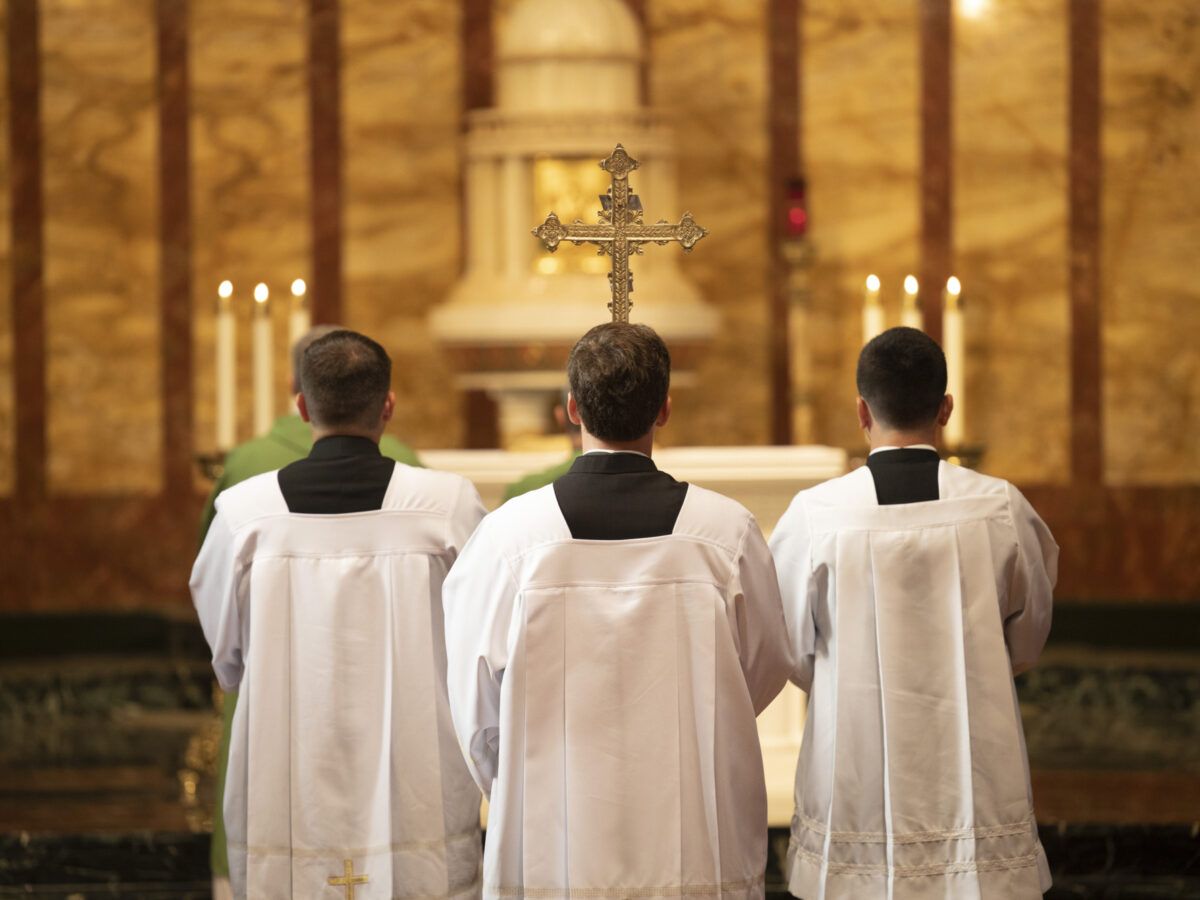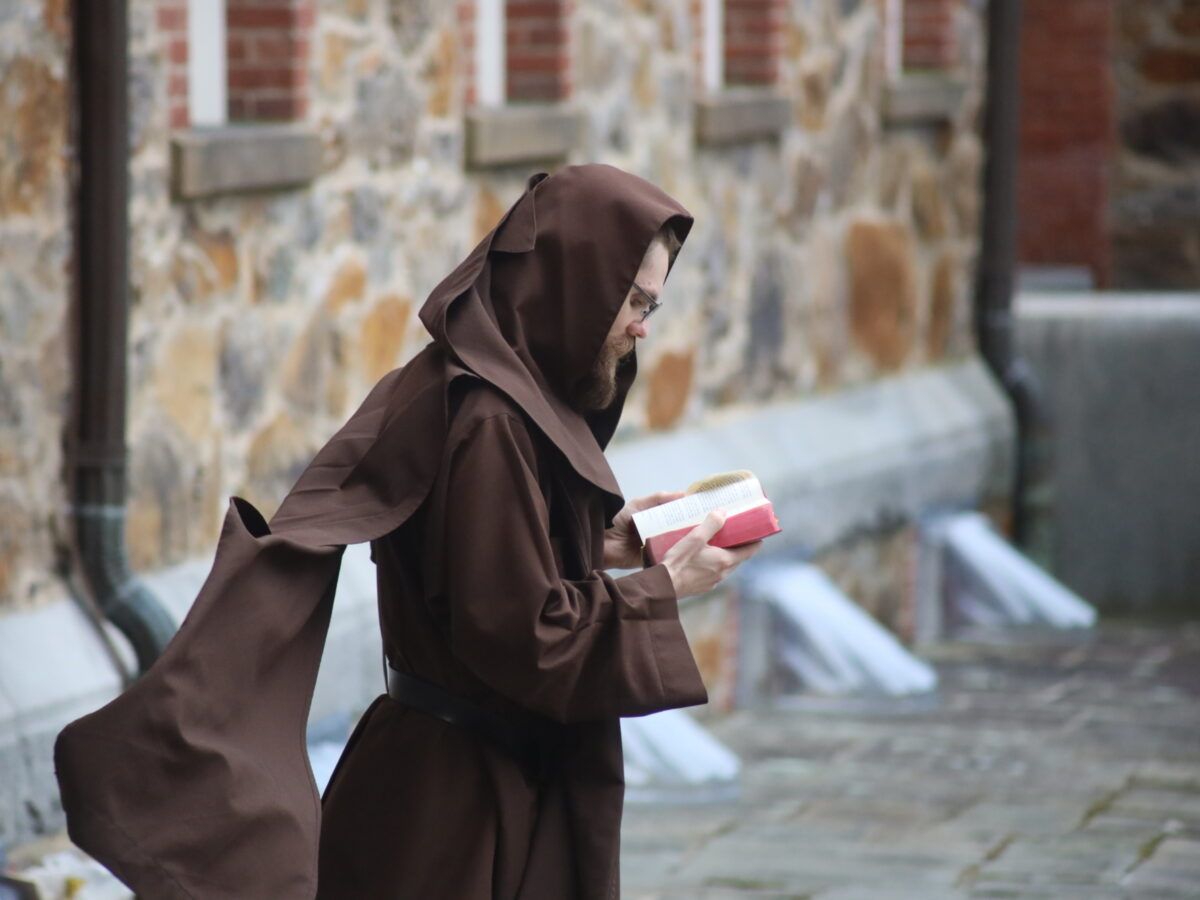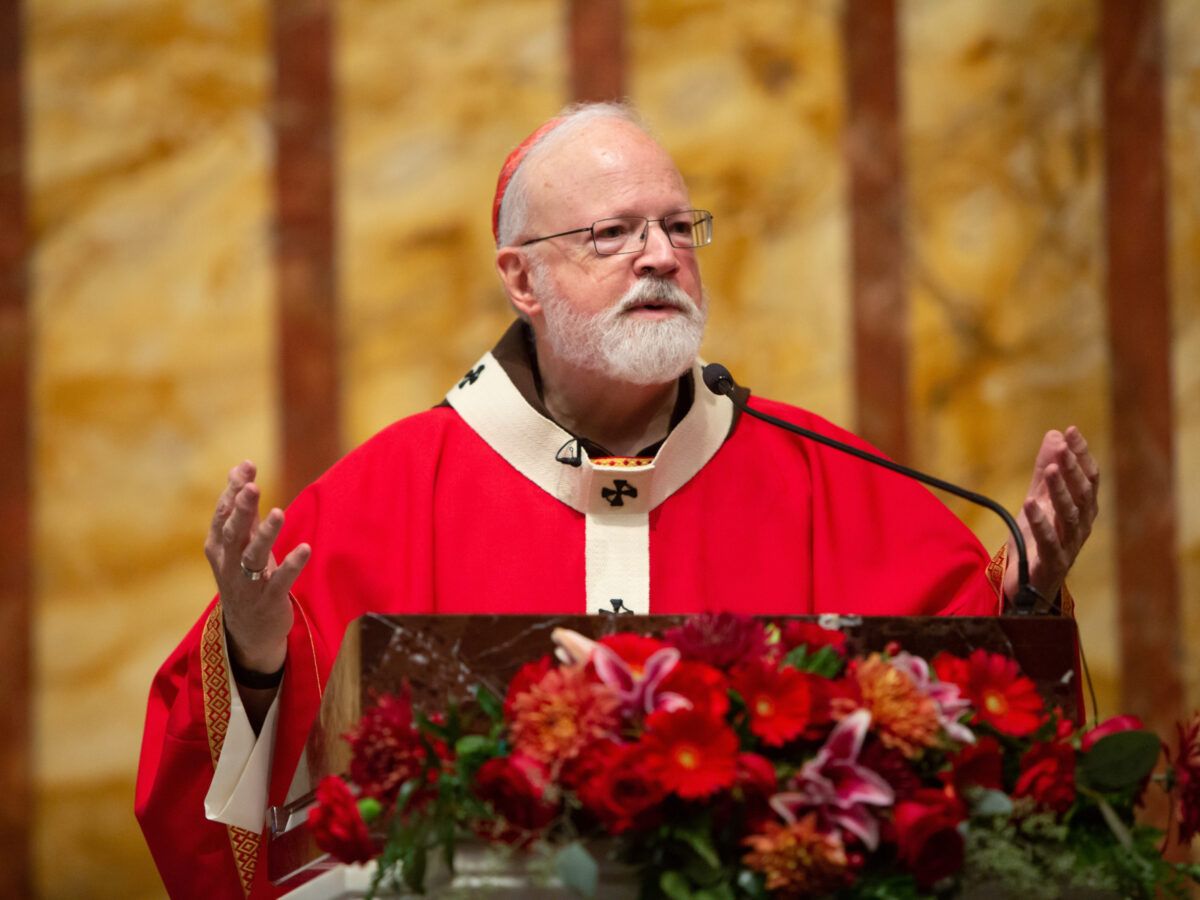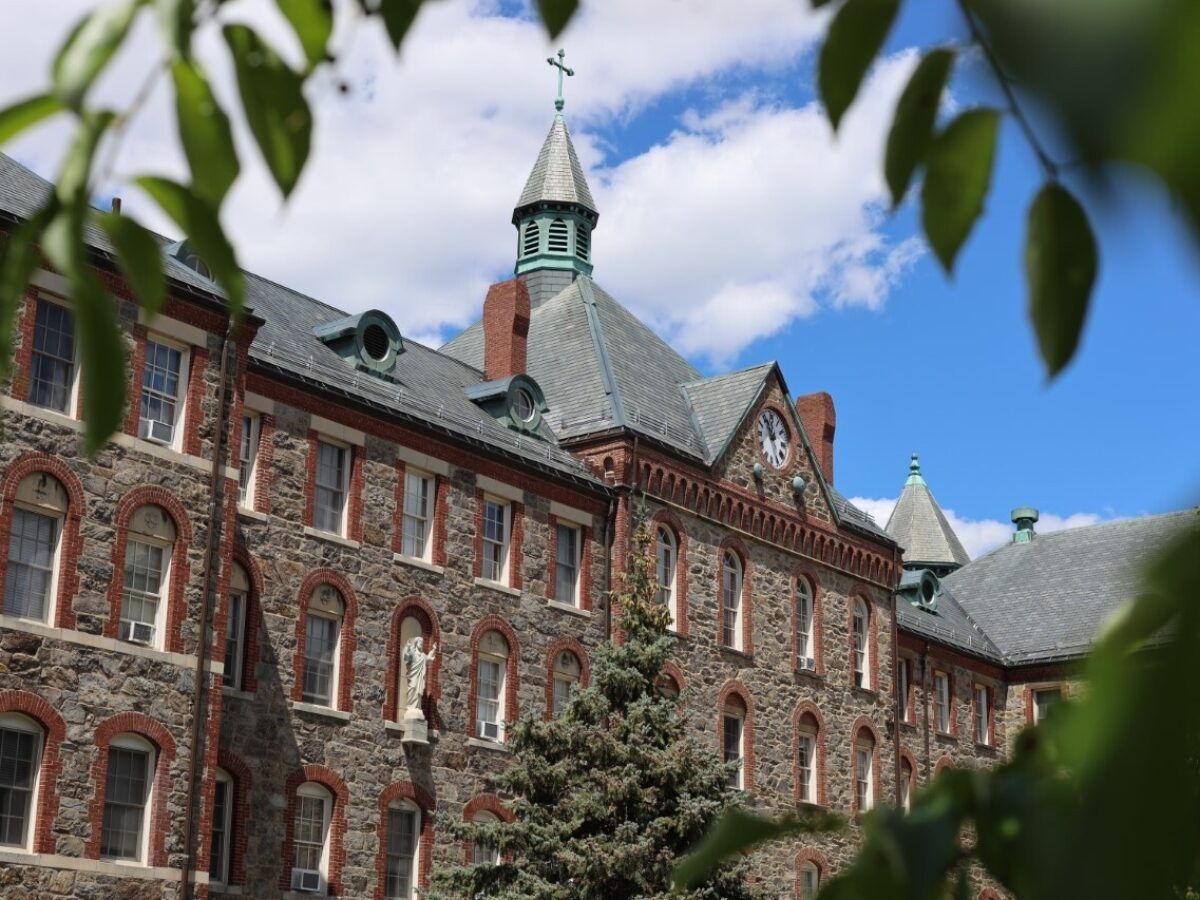
With Ecclesiastical Approbation
Seán Patrick Cardinal O’Malley, O. F. M., Cap.
Archbishop of Boston
May 16, 2024
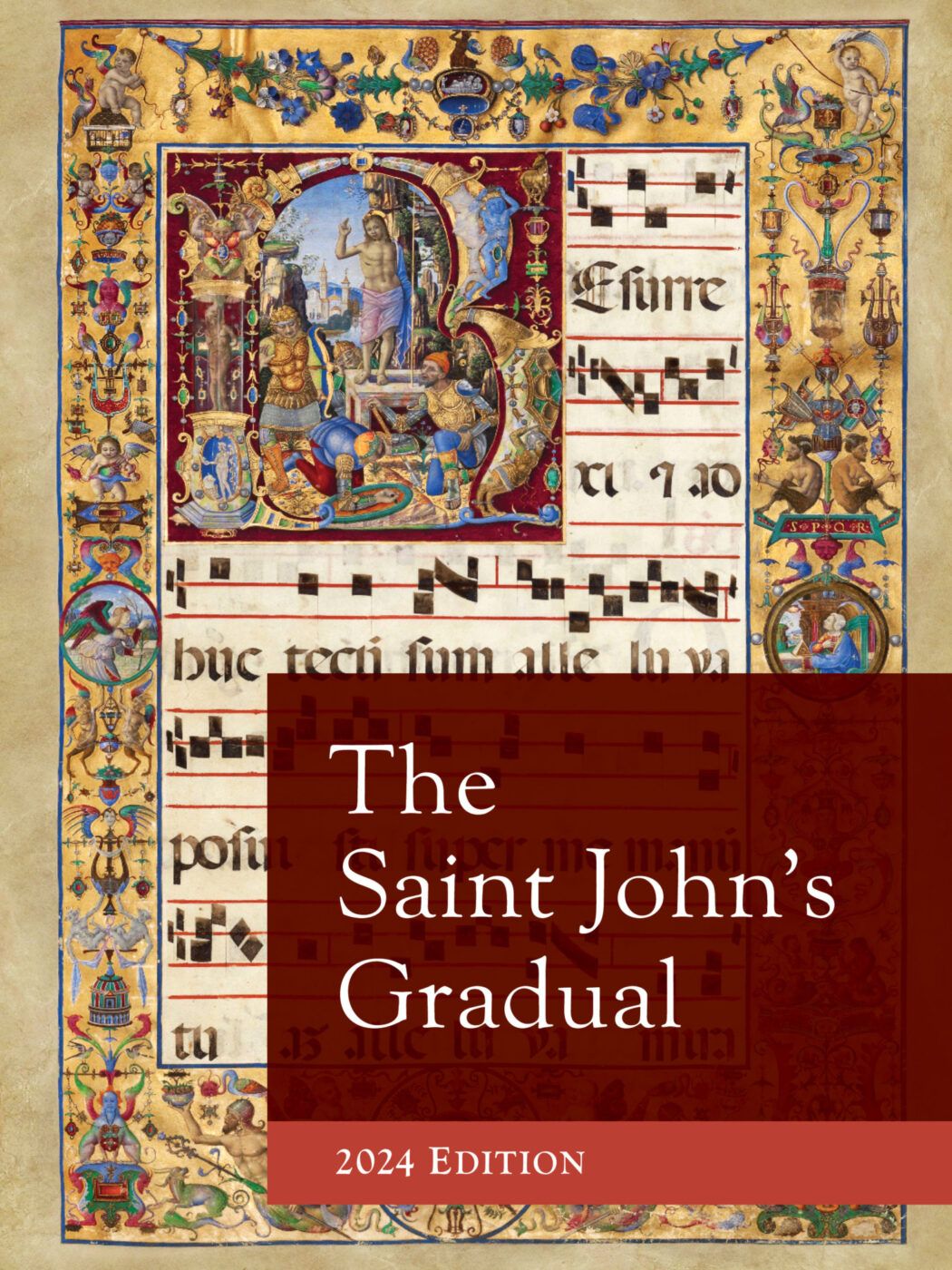
Saint John's Gradual, 2024 Edition
The Saint John's Gradual is book of music for Holy Mass in the Roman Catholic Church. It provides alternate English texts corresponding to the Roman Gradual with simple chant melodies. These chants would take the place of the Responsorial Psalm and Gospel Acclamation from the Lectionary as provided for by the General Instruction of the Roman Missal. An index provides the preferred chant option for nearly every occasion.
The assertion, “Those who sing pray twice,” is widely attributed to St. Augustine. However, in all the volumes of his works the Church has preserved, it’s not clear that he actually said it. I think one of the reasons this statement circulates is because it expresses an intuitive truth.
The Christian is called to communion with the God who created him or her. And as we lift our hearts and minds to Almighty God, it is fitting not only to add our voice as well, but to impart every beauty we can in our public communal prayer. God’s voice creates everything out of nothing; our voice in return can echo back the wonder of creation with the added beauty of music. It is fitting to render back unto God those gifts He has bestowed upon us.
In the experience of the early days of the Coronavirus pandemic, many Catholics were deprived of opportunities for the graces through the sacraments, especially with the cessation of public Mass. In my diocese, this covered much of the Lenten and Easter seasons in 2020, and even delayed my ordination to the Diaconate.
The return to public celebrations of the Mass was a cause of great joy, one that almost demanded music to accompany it. Unfortunately, the public health directives cautioned that singing might help spread the disease, and so diocesan guidelines limited us to a single cantor. Since social distancing also suggested avoiding altar servers, the natural thing for me to do was return to the friendly confines of the choir loft. And so I did.
At Mass, the choir is responsible for two distinct types of music. The first are the “ordinary” texts that never change (texts like the Gloria / Glory to God in the Highest, Sanctus / Holy Holy Holy and Agnus Dei / Lamb of God). The other texts are those that are particular — or “proper” — to the Mass being celebrated. These are the Entrance Antiphon, Responsorial Psalm (or Gradual), Gospel Acclamation (or Alleluia or Tract), Offertory Antiphon, and Communion Antiphon. In most parishes, selections for the Responsorial Psalm and Gospel Acclamation are taken from the Lectionary. There are fewer publishers who make options from other sources of the proper antiphons (also known as just the “propers”) available.
At Saint John’s Seminary, we had a custom of singing for most of our Masses. This included adaptations for the ancient proper antiphons of the Mass pre- served in the Graduale Romanum.1 We would frequently sing the Entrance Antiphon from the St. Michael Hymnal, Seminary musical arrangements of the Responsorial Psalm and Gospel Acclamation (whose texts were from the Lectionary), and Offertory and Communion Antiphons from collections by Fr. Samuel Weber, OSB (Proper of the Mass) or Adam Bartlett (Simple English Propers). Occasionally, especially Sundays and for more solemn occasions, we would substitute hymns sung by the entire congregation or sacred anthems from our rich choral tradition sung by the Seminary schola alone.
Taking this history and adapting it to the pandemic in the parish, what were the options? Singing the responsorial psalm seemed contrary to its purpose, as the people were asked not to sing on account of the pandemic. The ancient Gradual Antiphon from the Graduale Romanum was a suitable alternative. There were three obstacles: the texts were in Latin, with which my parish’s congregation was not familiar; and their length was not suited to the liturgical action at a daily Mass in the typical parish; and their difficulty was hard to sustain singing for daily Mass.
One can begin to see the wisdom of the Second Vatican Council, recognizing both the particular suitability of Gregorian chant to the Roman Liturgy, and the need for simpler melodies to accommodate churches without the ability to sing these long and complicated chants.
The Gradual Antiphons are among the most musically complicated chants in our tradition. There are 125 Gradual Antiphons in the 1974 Graduale Romanum. Neither collection of propers used by the Seminary set them. I later discovered one English collection of propers did set the Graduals. However, the Gregorian Missal, its source of English translations, focused on major celebrations that could occur on a Sunday, so it only contained about 70 of them.4 Largely missing were those antiphons appointed for use daily in Lent or for those proper to the celebration of the saints. Most of them can be found in the most recent translation of the propers directly approved by the predecessor organization to the USCCB for use in the transitional 1965 Roman Missal.
A similar difficulty exists with the Alleluia verses in the Graduale Romanum that precede the Gospel. The Alleluia portion of these traditional chants are often quite beautiful and easy to sing, and pair nicely with the corresponding psalm tone for the verse.
A collection of simplified Latin chants of the propers was published in France in 19556 and made available online through the work of the Church Music Association of America. Indeed, the Second Vatican Council seemed to endorse this work in principle.7 This is the model for the work that has yet to be completed in English: Take the most difficult chants in the Church, and set them to easier-to-sing psalm tones, as granted explicit permission of the Vatican (S.C.R. no 3697), all with reference to the current liturgical calendar.
Here, another problem arises. The Graduale Romanum of 1974 implements the Ordo Cantus Missæ of 1970. Having now advanced to the third typical edition of the Missále Románum and its attendant changes to the General Roman Calendar, not to mention subsequent changes8 and those adaptations particular to these United States of America, there are lacunæ that are not always easily resolved by a creative exploration of the Commons. Fortunately, the Lectionary always provides options for anything omitted from this work.
It is a gift to have the opportunity to work with a willing pastor to begin the process of learning and then producing musical scores of Gregorian Chant to dignify the Masses in time of pandemic, and then further actually singing them for the sacred liturgy. By the time I moved to serve in the sanctuary as a newly ordained Deacon, cantors from the parish (with the happy support of its music director) have continued singing these propers on Sundays. Upon return to the seminary, this work gained a second venue.
Both the parish and the Seminary are under the patronage of St. John the Evangelist, and thus the work had a natural title: The Saint John’s Gradual. It would seem St. John continues to smile upon this work, as my first priestly assignment includes a church under his patronage as well. It is my hope that the labor to produce these legitimate options for Holy Mass today will not be limited in its utility to the time of a pandemic, but as one more resource to “preserve and foster”9 this beautiful musical patrimony that has been handed on to us, for edification of the people and for the greater glory of God.
I am grateful for the support of the Rev. Fr. Peter B. Mottola, JCL of my diocese, under whose support this project began. He has graciously extended the loan of his copies of the Graduale Romanum and Gregorian Missal into gifts. The project continued with the enthusiasm of Mr. Michael Olbash, M. Mus. director of Music at Saint John’s Seminary upon my return to studies after Covid. Further appreciation is extended to Dr. Janet Hunt, DMA, FAGO, through whose prior work at the Seminary I came to a greater love of Gregorian Chant. I believe Dr. Hunt’s dedication to the art of liturgical music compares to a vocation in the theological sense. I would be blessed to work alongside her like again.
Mr. Olbash was also instrumental in proofreading this manuscript and offering many helpful suggestions. Of course, any remaining errata are the responsibility of the one who introduced them originally (and probably after his proofreading): me.
-Fr. Steven B. Lewis
Priest of the Diocese of Rochester
Citations are noted in the PDF document.
Download the PDFSource citations are given in each chant. For example, the Alleluia Verse “Dóminus regnávit, exsúltet” has the following reference: “Ps 97(96):1, E GM 440, M Dóminus regnávit, exsultet CA (1955) 25”
The first is a scriptural reference, where applicable. The references are generally taken from the Graduale Romanum. The original Vulgate reference of the Psalms is preserved in parentheses when it differs from numbering that is in common English use. (In practice, the verse numbers may also differ slightly depending on the English translation.) This seems to follow the current practice in the Third Edition of the Roman Missal as produced by the USCCB.
The English source follows, indicated by E. It is usually either the Gregorian Missal abbreviated ‘GM’, or the 1965 Missale Romanum abbreviated ‘1965 MR’, followed by the page number. Note that the Com- mons in the 1965 MR have page numbers differentiated by parentheses, which are preserved in the ref- erence. In the few cases where the author has had to provide a text, ‘SL’ is used.
Very occasionally, these texts have been modified as noted. The GM would occasionally offer an unnecessarily complicated translation and has been simplified here. Frequently the 1965 MR has dif- ferent translations of the same text in different places. The author attemped to use options which rendered the Latin text most faithfully. This continues a certain tradition in which the Latin texts of certain propers would differ between the Missal and Gradual. The author noted these discrepancies where found, and made an editorial decision.
The musical reference is also given, indicated by M. The name of the chant is given. “CA” refers to Chants Abrégès des Graduels, des Alleluias et des Traits pour Toute L’Année, 1930, and “CA (1955)” refers to its successor, Graduels, Versets de L’Alleluia et Traits por Toutes Les Messes de L’Année, 1955. The page number follows the reference. These references are handy should the use of Latin be desired. Where I have found them, credit for the preservation of these works has been given to the Church Music Association of America. The author has also contributed a single chant to this collection.
‘GM’ text translations by Solesmes Abbey, licensed in the Creative Commons.
‘1965 MR’ text bears a number of copyrights. Benzinger Brothers printed the text consulted, and it bears 1966 on the cover page. The inconsistency in the translations of some the texts suggests that the Graduals, Alleluia verses, Tracts and Canticles come from various sources in various places. Fair use is asserted.
©2020-2024 Rev. Steven B. Lewis
